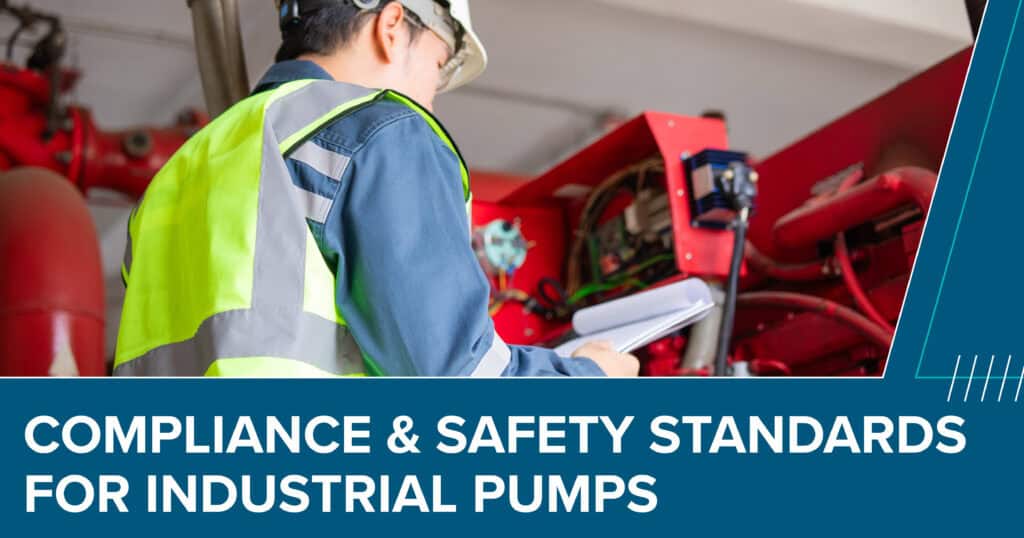Properly managed pump systems are essential to moving fluids, keeping processes efficient, and protecting people and assets. Beyond performance and reliability, however, pumps must also operate under a framework of compliance and safety standards. These standards are established by international and national organizations. They provide a set of compliance codes designed to protect workers, safeguard facilities and ensure equipment is built and operated responsibly.
Understanding and following these codes is more than just trying to avoid fines or pass periodic inspections. It’s all about creating a safer workplace, improving system reliability and demonstrating accountability to customers and regulators alike.
International Standards: ISO
The International Organization for Standardization (ISO) provides globally recognized guidelines for pump design, performance and testing. These standards help ensure pumps meet consistent expectations no matter where they are manufactured or used.
For example, ISO 5199 outlines general requirements for process pumps, focusing on safe operation and long-term reliability. Adhering to such standards helps operators trust that their equipment will perform consistently and reduces the risk of premature failures.
Fire Safety Standards: NFPA
In many facilities, pumps play a critical role in emergency systems, such as fire suppression. That’s where the National Fire Protection Association (NFPA) plays a major role in the industry. Their codes define how pumps should be selected, installed and tested when they are part of fire protection systems.
A key example is NFPA 20, which governs the installation of stationary fire pumps. This standard ensures that, in the event of an emergency, pumps deliver the pressure and flow needed to keep people and property safe. Following NFPA guidelines is not only a legal requirement in many jurisdictions but also a fundamental safeguard for workplace safety.
Workplace Safety Standards: OSHA
The Occupational Safety and Health Administration (OSHA) sets standards that directly impact how pumps are installed, maintained and accessed by employees. These rules are focused on protecting workers from hazards like moving parts, high-pressure fluids and unexpected equipment start-ups.
For instance, OSHA’s Lockout/Tagout (LOTO) requirements are critical during pump maintenance. By ensuring energy sources are properly isolated before work begins, LOTO procedures prevent serious accidents and injuries. Better safety compliance standards within your pump operation helps keep technicians safer every time they service equipment.
Why Compliance Matters
When pump systems comply with ISO, NFPA, OSHA and other regulatory standards, the benefits go far beyond regulatory approval:
- Safer Work Environment: Workers are protected from potential hazards, reducing accidents and downtime.
- Improved Reliability: Pumps designed and tested under recognized standards are more dependable, lowering maintenance costs.
- Peace of Mind in Emergencies: Fire safety systems and critical backup pumps will be ready when needed most.
- Stronger Reputation: Companies that demonstrate compliance build trust with clients, partners and regulators.
Bringing It All Together
Compliance with industrial pump standards should be seen as a strategic advantage, not just an obligation. By integrating ISO guidelines for design and performance, NFPA rules for fire safety and OSHA protections for workers, organizations can create a strong framework that supports both safety and efficiency.
At DXP Pacific, we help customers align their equipment and processes with the right standards. Contact us today to discuss how we can strengthen compliance and safety in your pump operations.

